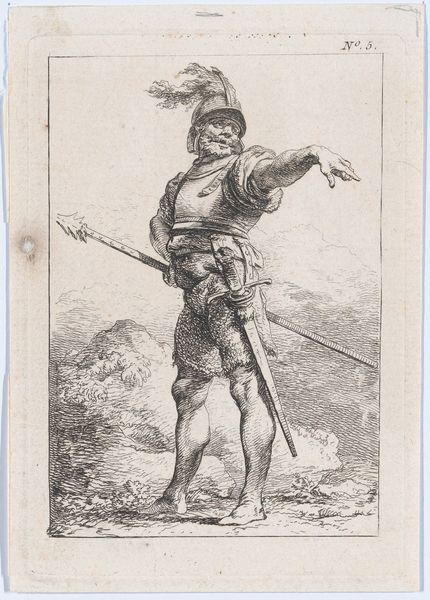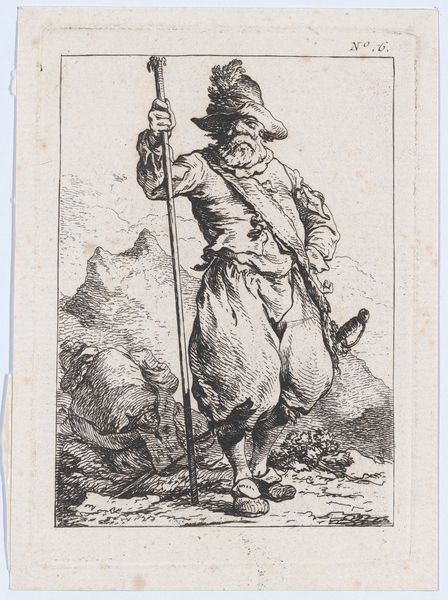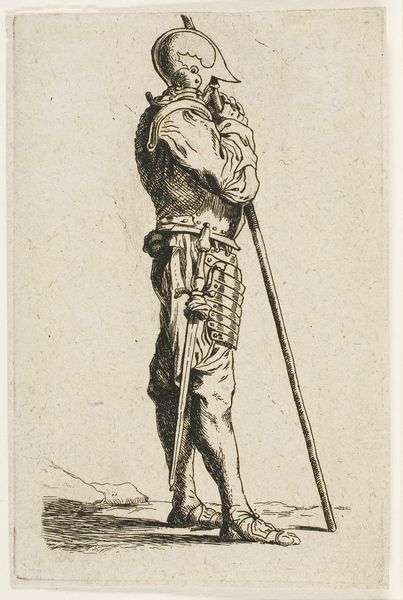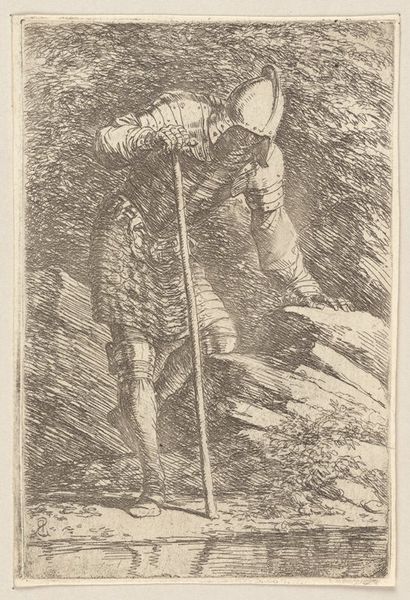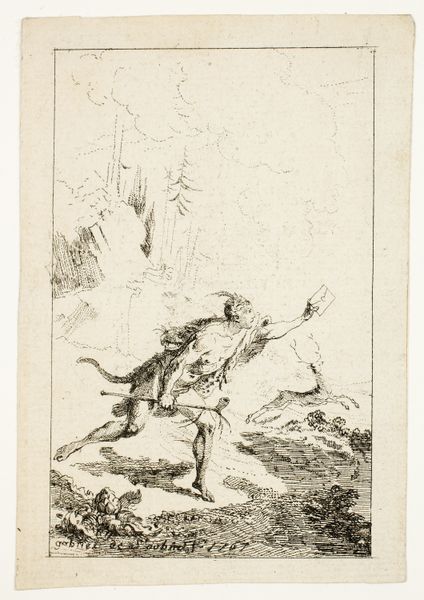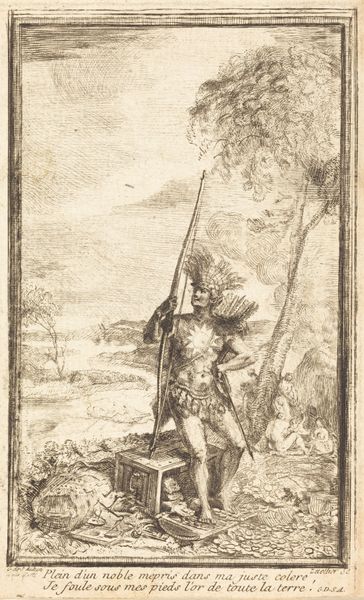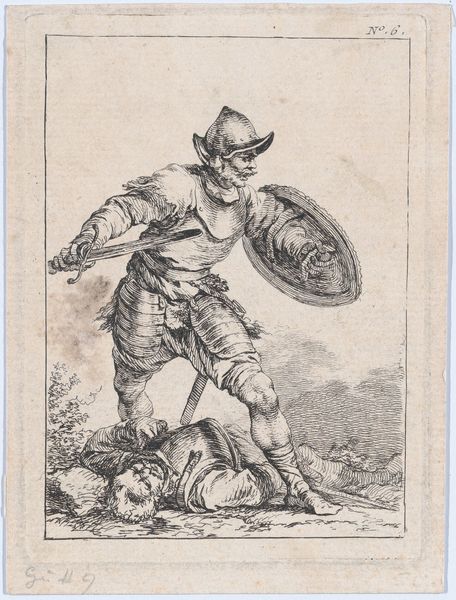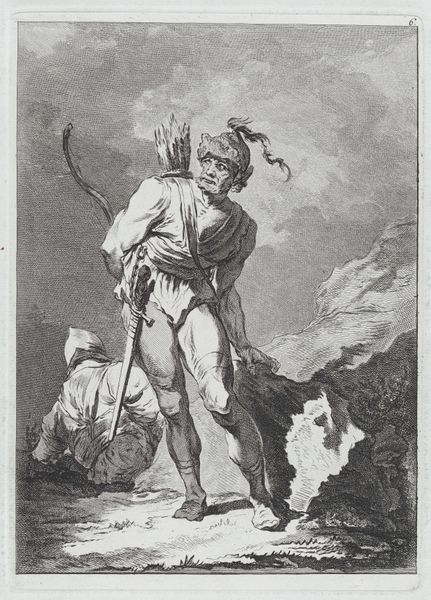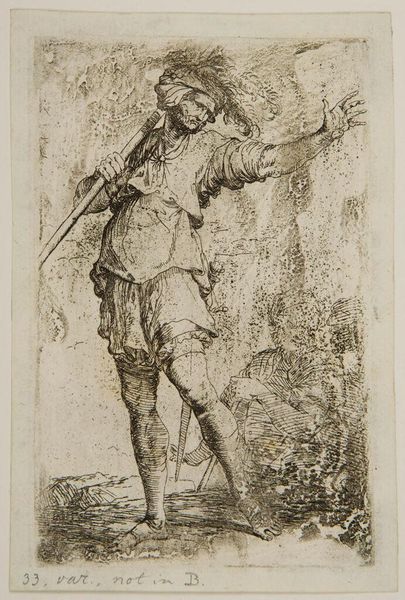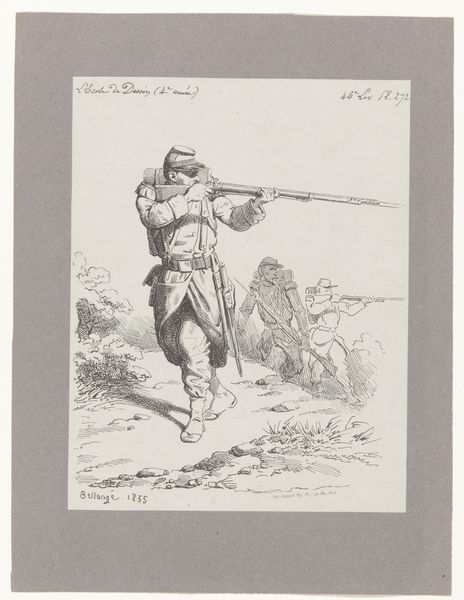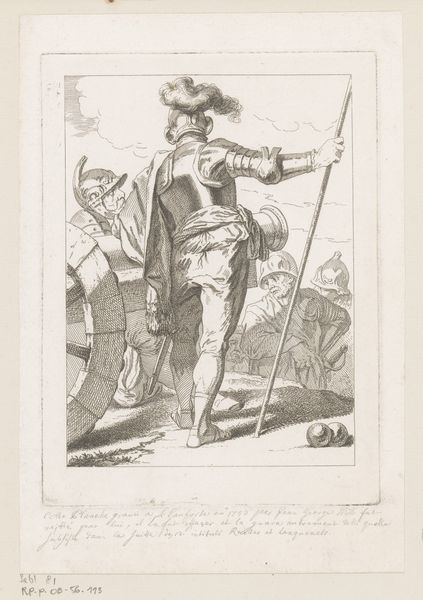
Standing Soldier Seen from Behind 1755 - 1771
0:00
0:00
Dimensions: Image: 4 1/4 in. × 3 in. (10.8 × 7.6 cm) Plate: 4 3/4 × 3 3/8 in. (12.1 × 8.5 cm) Sheet: 5 3/16 × 3 3/4 in. (13.1 × 9.5 cm)
Copyright: Public Domain
This is Philippe Jacques de Loutherbourg's "Standing Soldier Seen from Behind", an etching made in the late 18th century. During this period, European society was structured around rigid hierarchies and expectations of gender roles, particularly within the military. Consider how the artist chose to depict the soldier from behind. In doing so, Loutherbourg obscures the soldier's individual identity and invites viewers to consider the universal experience of those who serve. The abandoned armor on the ground suggests a vulnerability beneath the surface of military strength. Is it possible to read this figure as an allegory for the loss of personal identity within the military apparatus? What does the artist's choice to depict the soldier without shoes imply? This etching subtly challenges the conventional glorification of war, and offers a quiet reflection on duty, identity, and the human cost of conflict.
Comments
No comments
Be the first to comment and join the conversation on the ultimate creative platform.
